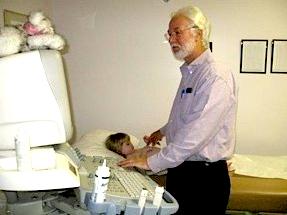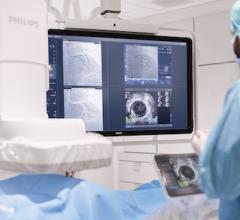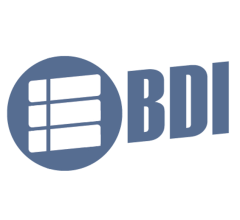
As a leading provider of maternal-fetal, newborn and pediatric subspecialty physician services, Pediatrix Medical Group needed to streamline the transfer of images and reports between its facilities around the country. Seeking a faster, more reliable method of exchanging files than on CD, the group adopted a cloud-based medical information exchange.
The Search for a Solution
With the advent of the international DICOM standard for echocardiography the transfer of files on hard media became standard in medicine by healthcare information technology (IT) systems.
Hard media transfer is now being replaced by a cloud-based service (eMix by DR Systems) that is not only HIPAA-compliant, but features multiple layers of security including encryption, and accepts contractual responsibility for security breaches. Large imaging files can be sent by the service at full diagnostic resolution. This is crucial because the echocardiogram files we receive can be up to one gigabyte in size.
The service has not only eliminated geographic concerns such as the one we faced in Colorado, but it alleviated our concerns over compliance and privacy. Quite literally, files can be sent between any Internet-connected IT system throughout the world. Speed is another major advantage — we are able access files sent in minutes rather than days. The transactions are as reliable and straightforward to execute as e-mail but if for any reason an error occurs, they are also auditable.
Further, image sharing services need to be cost-effective and simple to install without breaching IT firewalls and protocols at zero cost. These services also need to eliminate the need to use CDs/DVDs and the courier/shipping service, which saves about $25 to $40 for each mailing. The service we use has overcome all challenges with exchanging files on hard media while meeting our other objectives for a solution. It was the only such service that met all of our criteria.
Implementation
We have rolled out the cloud-based service at 11 of our 18 facilities. Six of those facilities routinely send and receive files using the service, with the other five are moving in that direction.
We have also arranged to use cloud-based image sharing with 25 of the hospital partners with which we regularly exchange imaging files. Convincing other organizations to change their practices and workflows is obviously a more delicate issue than commanding it in your own operation. Even with a technology as universally advantageous as cloud-based file exchanges, it can be a challenge to get other institutions to make the necessary adjustments in their routines.
We’ve found that it helps to first demonstrate the benefits of the system to someone at a partner facility whom we know is likely to be receptive. If they like what they see, our hope is that they will champion it to the decision makers and other critical parties in their business.
Given the obvious pluses of cloud service, we expect to continue enrolling our referring facilities in this project until cloud-based medical information exchange is the standard file transfer method in our network. Hundreds of facilities nationwide now use this technology. It is no longer experimental. We were ahead of the curve in adopting the service, and will continue to be a leader in championing it.
Other Uses for Cloud-Based Medical Information Exchange
As we continue to deploy the service for our original purpose, we have also found it useful in other ways. Sometimes we will receive a transfer patient’s imaging study that is of poor quality. Because of the speed and reliability of the cloud-based service, we can request re-imaging of the patient and receive the file within minutes after the exam. That scenario, an obvious clinical benefit, would be impossible if we were restricted to exchanging files on CDs or DVDs.
We are planning some intriguing new uses for cloud-based medical information exchange, including:
- Real-time consultations with multiple specialists in various locations, all viewing the same files on their individual computers or mobile devices, and
- Clinician education with multiple physicians viewing the same files.
To accomplish these goals efficiently, the files will need to be viewed with a zero-download viewer — that is, a viewer that can be accessed with through the browser, without the user needing to download an application. eMix has developed such a viewer in the beta testing phase.
Cloud-based image sharing is transforming clinical care at Pediatrix Medical Group. But this is only partly due to the large scale of our operation. More than most, this technology is suitable for medical facilities of all sizes. In fact, smaller institutions including individual physician offices have far greater reasons to use technology that doesn’t require new infrastructure or hardware, which a cloud-based service like eMix does not. Downloadable content over the Internet is transforming businesses from publishing to music to movie rentals. For similar reasons, I believe we are about to transform file exchanges in healthcare.
Editor’s note: Richard Simon is national director of cardiology at Pediatrix Medical Group, a leading national provider of maternal-fetal, newborn and pediatric subspecialty physician services. He can be reached at [email protected].




 December 18, 2025
December 18, 2025 








